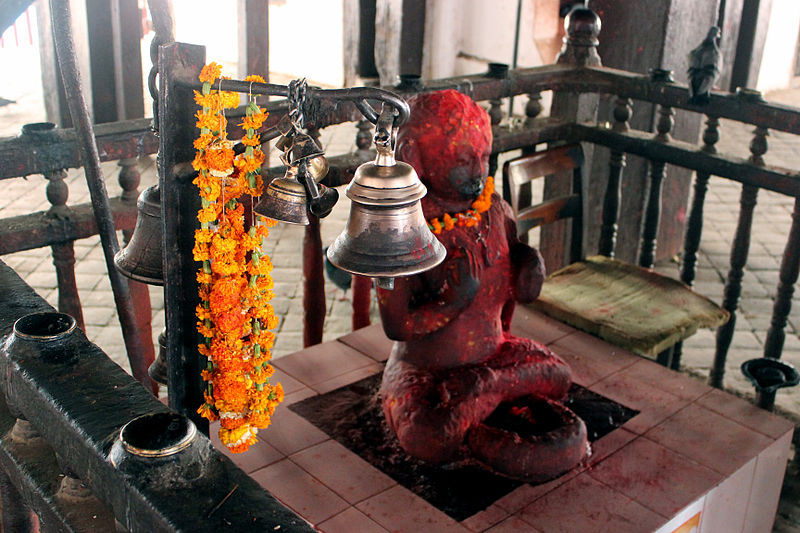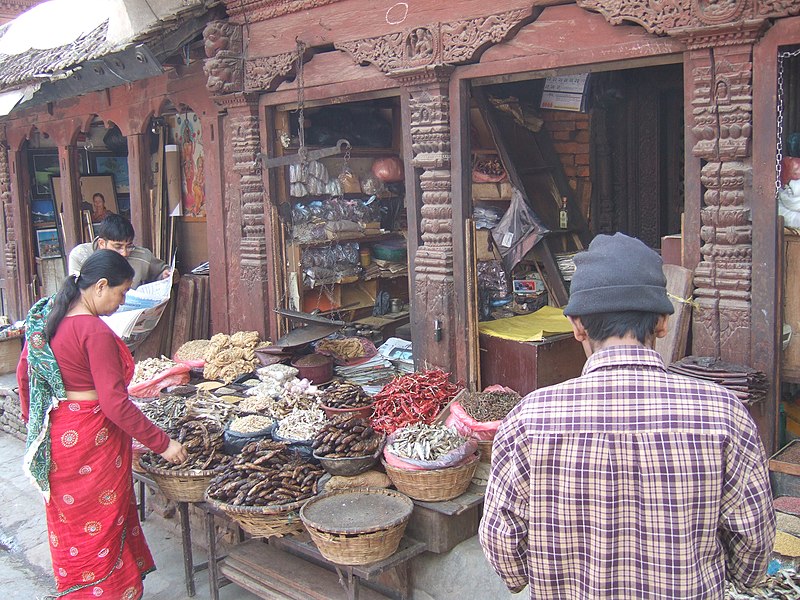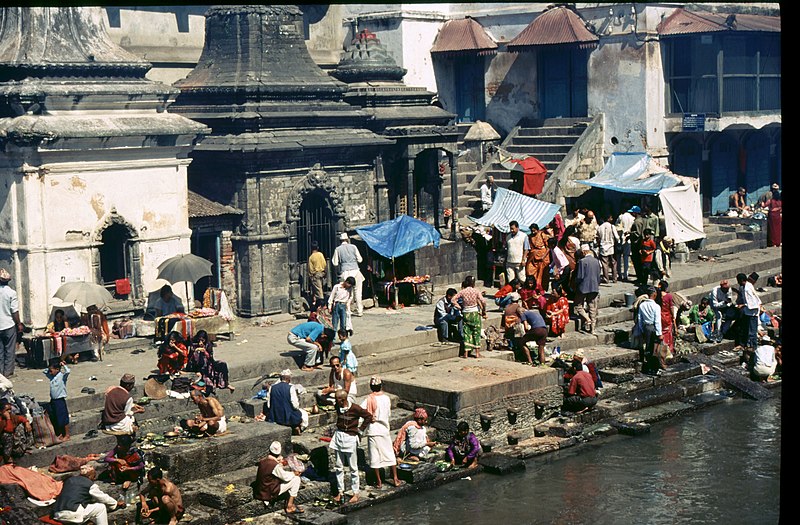Kathmandu, the capital of Nepal, has been the center of the country's history, art, culture and economy. Stroll through the old town, the city reveals itself as a fascinating place.
Kathmandu
Maru is a historical neighborhood in central Kathmandu and one of the most important cultural spots in the city. It is linked with the origin of the name Kathmandu, and forms part of what is generically known as Durbar Square. Maru is also a market square, a venue for religious festivals and a celebrated residential quarter. It is a crossroads where two ancient trade routes connecting India and Tibet intersect. Maru consists of a large square encircled by temples and rest houses. It presents an example of a temple square typical of traditional Newar urban planning.
In front of the old royal palace of the former Kathmandu Kingdom, it is one of three Durbar (royal palace) Squares in the Kathmandu Valley, all of which are UNESCO World Heritage Sites. Durbar Square was surrounded with spectacular architecture and vividly showcases the skills of the Newar artists and craftsmen over several centuries. The preference for the construction of royal palaces at this site dates back to as early as the Licchavi period in the third century. The square is still the center of important royal events like the coronation of King Birendra Bir Bikram Shah in 1975 and King Gyanendra Bir Bikram Shah in 2001.
Hanuman Dhoka is a complex of structures with the Royal Palace of the Malla kings and also of the Shah dynasty in the Durbar Square. The eastern wing with ten courtyards is the oldest part dated to the mid 16th century and the royal family lived in this palace until 1886. The stone inscription outside is in fifteen languages. On the west side, the Tribhuwan Museum has exhibits of items of the grandfather of King Birendra. Exquisite stone carvings, several impressive thrones, jewel-studded ornaments used for coronations, weapons, furniture, wooden temple carvings and a coin collection are on display at the museum.
Thamel is a commercial neighbourhood in Kathmandu and has been the centre of the tourist industry in Kathmandu for over four decades, starting from the hippie days when many artists came to Nepal and spent weeks here. The neighbourhood is distinguished by its narrow alleys crowded with various shops, vendors, cars, rickshaws, two-wheelers and pedestrians. Commonly sold goods include food, fresh vegetables/fruits, pastries, trekking gear, handicrafts, souvenirs and woolens. Travel agencies, small grocery stores, budget hotels and restaurants also line the streets.
Also known as the Garden of Six Seasons, it is a neo-classical garden built in 1920. It consists of three pavilions, an amphitheater, ponds, pergolas, and urns. The garden was remarkably modern in its time, comparable to other garden designs in the first quarter of the 20th century. The architectural sophistication of the individual pavilions suggests that they were inspired by pattern books, with minor local adaptations.
The Narayanhiti Palace long served as residence and principal workplace of the reigning Monarch of the Kingdom of Nepal and the palace was often the centre of state occasions and royal hospitality. In 1961 King Mahendra ordered the demolition of old palace and construction of new palace. The new palace was built in Nepalese architecture style.
Budhanilkantha, Kathmandu
It is a Tibetan Buddhist monastery on the outskirts of the city. Kopan has been especially famous for teaching Buddhism to visiting Western foreigners since the early 70's. Courses generally combine traditional Lam Rim teachings with informal discussion, several periods of guided meditation, and a vegetarian diet. Kopan Monastery has also recently become a popular recreational destination for Kathmandu residents and tourists.
Also called Boudhanath or Boudha, it is a stupa (a mound-like or hemispherical structure containing relics, typically the remains of Buddhist monks or nuns, that is used as a place of meditation). Its massive mandala makes it one of the largest spherical stupas in Nepal. The Stupa is on the ancient trade route from Tibet and Tibetan merchants have rested and offered prayers here for many centuries. When refugees entered Nepal from Tibet in the 1950s, many decided to live around Boudhanath. As of 1979, Boudhanath is a UNESCO World Heritage Site.
It is a famous, sacred Hindu temple dedicated to Pashupatinath (an incarnation of the Hindu god Shiva as "lord of the animals") and is located on the banks of the Bagmati River. It is considered one of the sacred temples of Hindu faith .The temple serves as the seat of the national deity, Lord Pashupatinath.The complex is on UNESCO World Heritage Sites's list Since 1979. One of the major Festivals of the temple is Maha Shivaratri on which day over 800,000 devotees visit here. The complex is consisted of 518 temples and monuments. This main temple is built in the Nepalese pagoda style of architecture. All the features of pagoda style is founded here like cubic constructions, beautifully carved wooden rafters on which they rest (tundal).
It is an ancient religious architecture atop a hill where visitors can get the best panoramic view of the Kathmandu Valley. For the Buddhist Newars in whose mythological history and origin myth as well as day-to-day religious practice, Swayambhu occupies a central position, it is probably the most sacred among Buddhist pilgrimage sites. For Tibetans and followers of Tibetan Buddhism, it is second only to Boudha. The Swayambhu complex consists of a stupa, a variety of shrines and temples, some dating back to the Licchavi period. A Tibetan monastery, museum and library are more recent additions.























